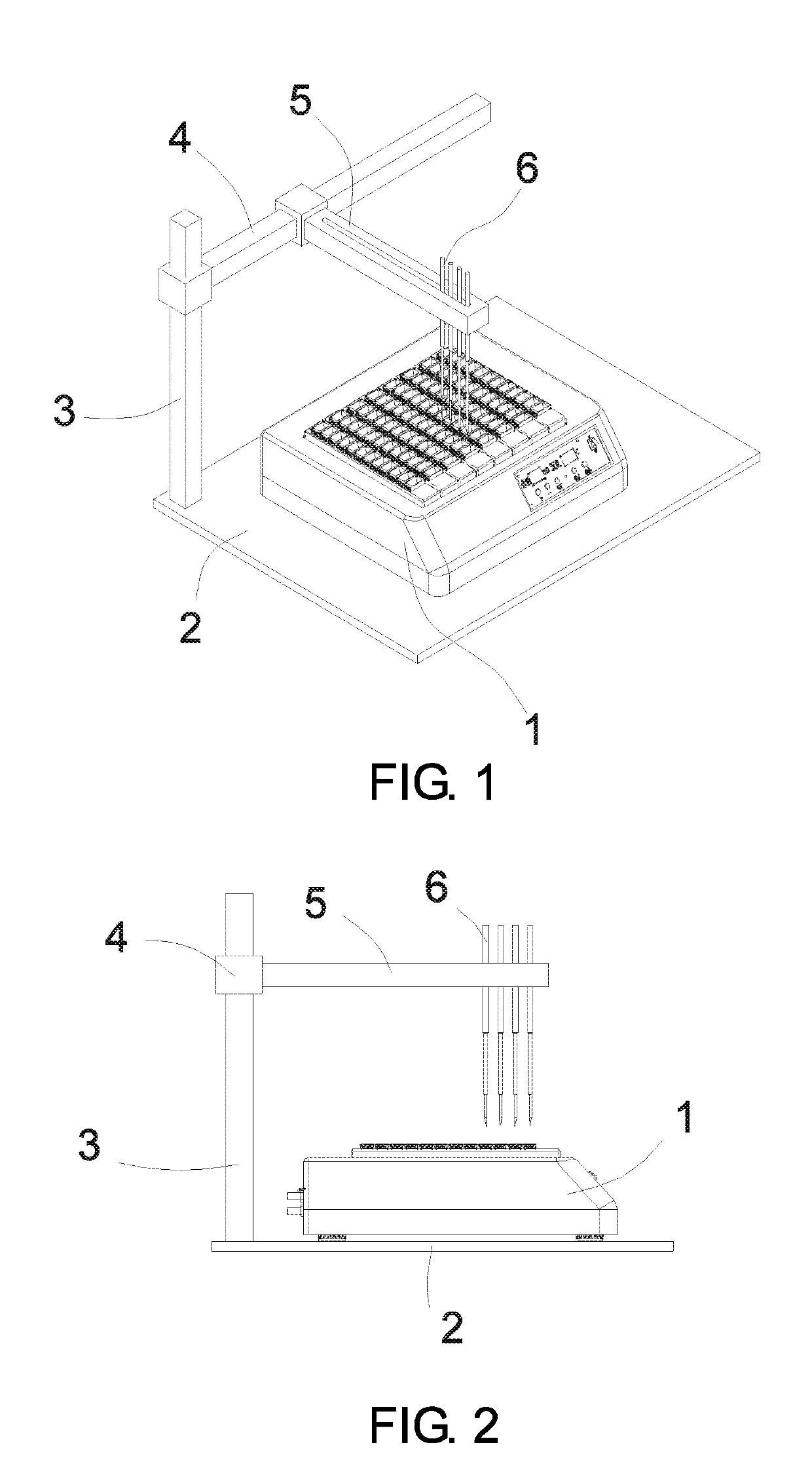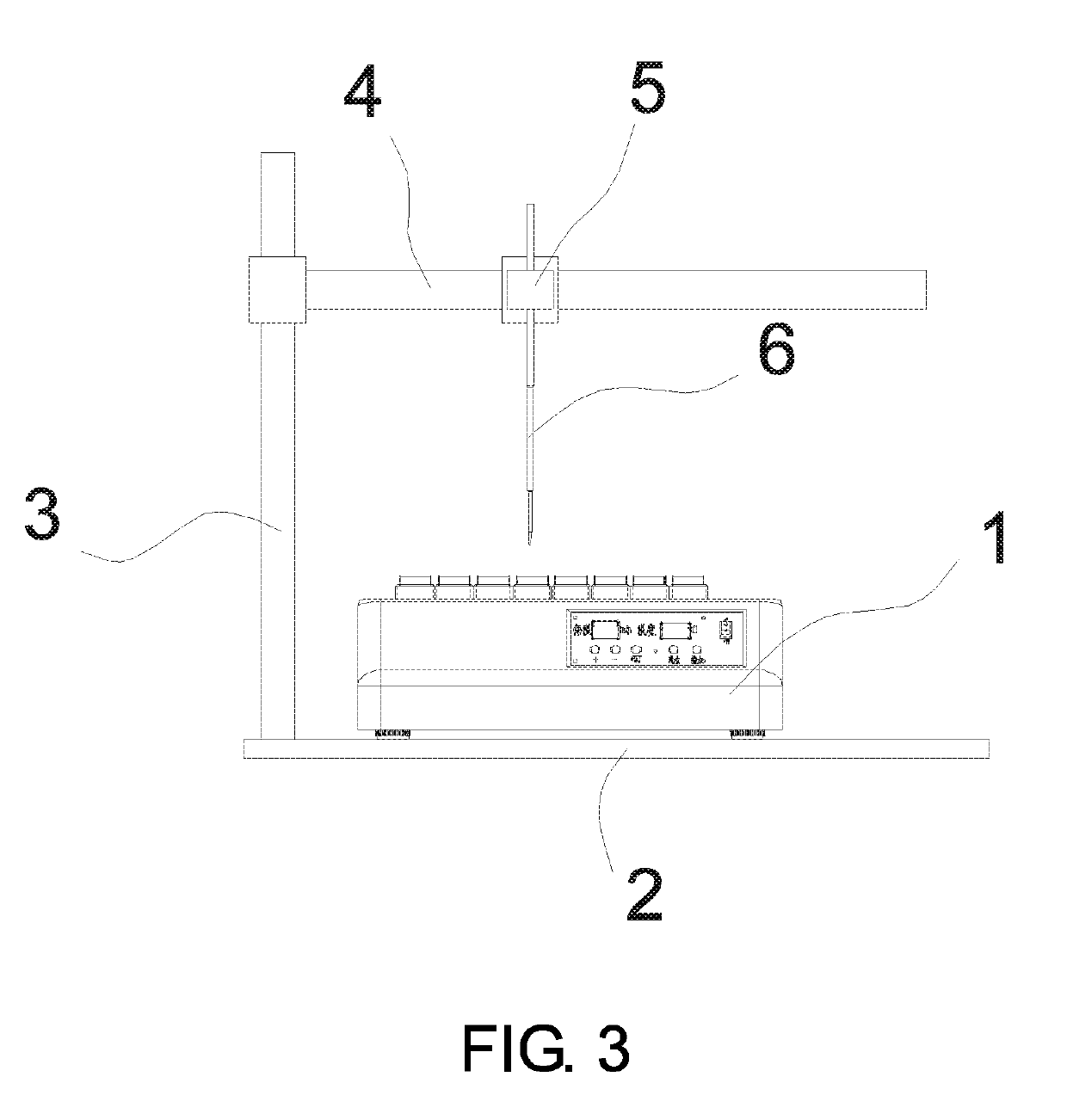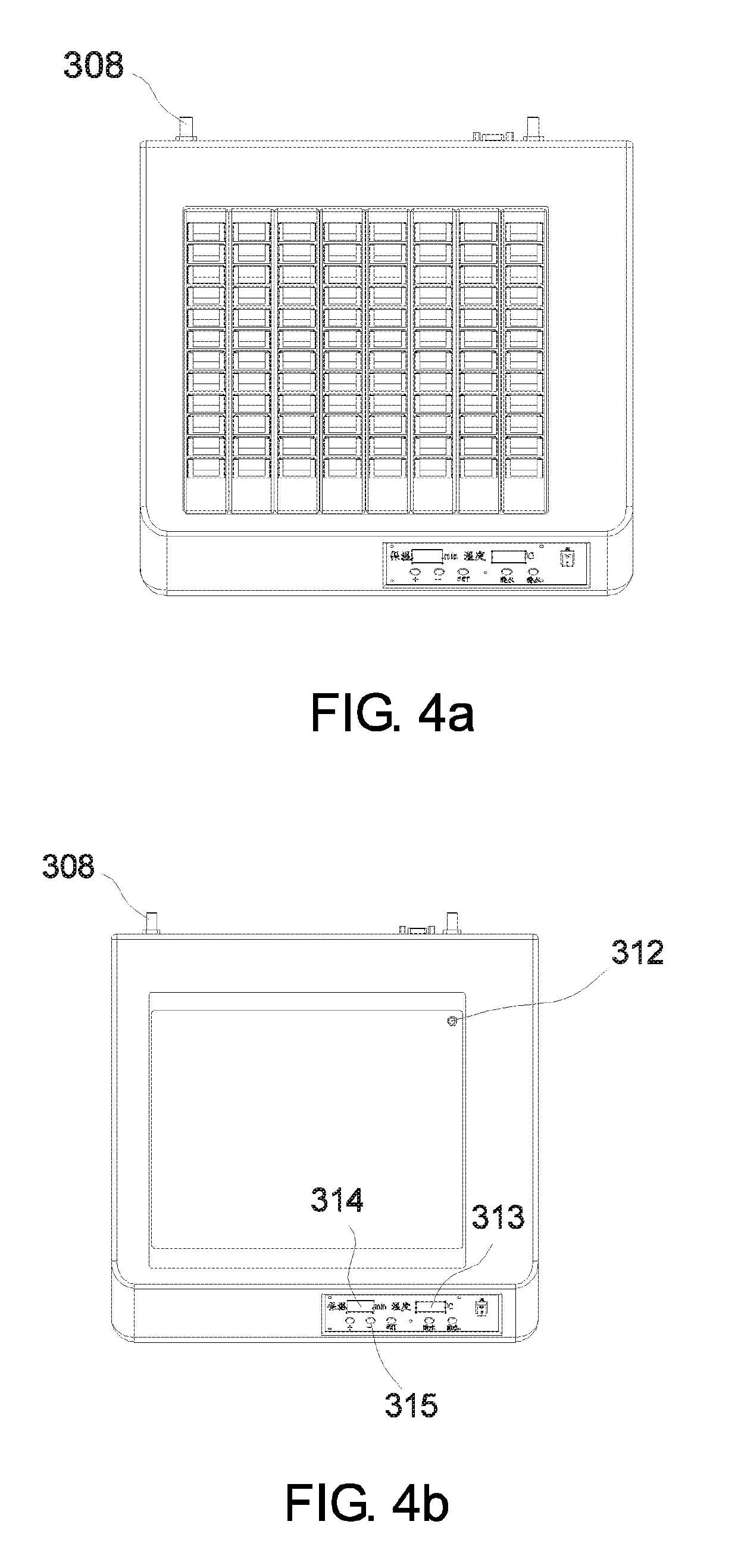Fully-automated biological slide specimen processing device and method
a processing device and fully automatic technology, applied in the field of biological specimen processing, can solve the problems of inability to guarantee the full cover of the specimen, the device that is used for slide specimen processing in the current manual operation, and the inability to heat resist, so as to achieve the effect of processing a large quantity of slide specimens more effectively and more reliably
- Summary
- Abstract
- Description
- Claims
- Application Information
AI Technical Summary
Benefits of technology
Problems solved by technology
Method used
Image
Examples
Embodiment Construction
[0065]The present invention is further described below in combination with specific embodiments, but implementations and protection of the present invention are not limited by these.
[0066]As shown in FIG. 1 to FIG. 3, a fully-automated biological slide specimen processing device in the embodiment includes a testing assembly 1, a base platform 2, a Z-arm 3, an X-arm 4, a Y-arm 5, a dispensing nozzle 6, a reagent scanner which can identify a barcode and a QR code, and a slide specimen scanner which can identify a barcode and a QR code; wherein X, Y and Z correspond to coordinate axes of the space rectangular coordinate system.
[0067]As shown in FIG. 4a to FIG. 5b, the testing assembly 1 includes a container 301, a base 302, a heating device 303, a liquid inlet 308, a liquid outlet 307, a controller 309, a thermocouple 312, a slide 101, a slide cover plate 601 and a slide rack 602; the controller 309 controls the heating device to start and to stop heating, and the heating device 303 is...
PUM
| Property | Measurement | Unit |
|---|---|---|
| plane angle | aaaaa | aaaaa |
| thickness | aaaaa | aaaaa |
| thickness | aaaaa | aaaaa |
Abstract
Description
Claims
Application Information
 Login to View More
Login to View More - R&D
- Intellectual Property
- Life Sciences
- Materials
- Tech Scout
- Unparalleled Data Quality
- Higher Quality Content
- 60% Fewer Hallucinations
Browse by: Latest US Patents, China's latest patents, Technical Efficacy Thesaurus, Application Domain, Technology Topic, Popular Technical Reports.
© 2025 PatSnap. All rights reserved.Legal|Privacy policy|Modern Slavery Act Transparency Statement|Sitemap|About US| Contact US: help@patsnap.com



